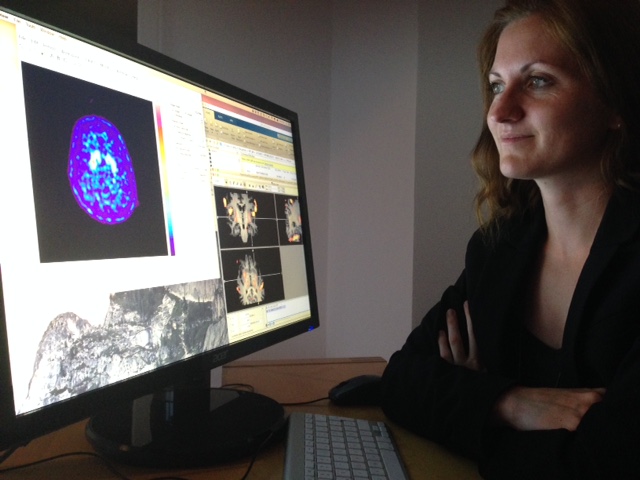The Daily Free Press recounts the HUBWeek event in which Center Director Bruce Rosen and medical illustrator Danny Quirk spoke about the intersectionality of human anatomy and visual art.
Combined PET / fMRI Findings Shed Light On The Pathology Of Lewy Body Diseases
Lewy body diseases such as Lewy body dementia and Parkinson’s disease are common age-related neurodegenerative disorders for which there is currently no cure. Researchers have been looking at ways to address this, including exploring early identification of and effective treatments for the diseases. Recently they have been focusing on multimodal imaging combining positron emission tomography (PET) and functional magnetic resonance imaging (fMRI)—particularly as the two modalities together offer complementary information not available with either alone.
But although the potential of multimodal imaging in tackling neurodegenerative diseases is widely recognized, studies using PET and fMRI together are still rare. This is likely because of the high cost, technical difficulties and considerable patient burden associated with this type of study.
A team of investigators at the MGH Martinos Center for Biomedical Imaging is looking to change this.
In a recent Neuroimage: Clinical study, Anna Rieckmann, Koene Van Dijk and others reported findings obtained with PET and fMRI data from the same patients that yield new insights into the underlying pathology of Lewy body diseases—insights that might not have been available otherwise. They showed, for instance, that functional connectivity between the midbrain and the striatum is linked to the integrity of the dopamine system in patients with the diseases.
“The insights could have important clinical implications,” said Van Dijk, a researcher with the Center and an Instructor in Radiology at Harvard Medical School. They suggest that this connectivity could serve as an indicator of underlying pathology in diseases characterized by dopamine loss. Thus, with current advancements in fMRI image acquisition and analyses techniques, noninvasive functional connectivity MRI could aid in clinical diagnosis and in the assessment of treatment interventions.
Underscoring the utility of integrated PET-MR
The study drew from a unique imaging data collection run by Drs. John Growdon, Keith Johnson and Stephen Gomperts at MGH—the collection combines multiple PET scans, MRI scans, and neuropsychological testing in the same set of patients with Lewy body diseases—and thus underscored the tremendous value in the combination of information derived from PET and fMRI from the same patients.
Normally, achieving this with separate PET and MR scanners can be difficult, but the integrated PET-MR technology at the Center overcomes many of the challenges associated with doing so. It allows, for example, more accurate co-registration of the two modalities and lower patient burden.
Other groups in the Martinos Center are also working to advance the technology for a range of applications. For example: Using one of the Center’s advanced integrated PET-MR systems, the Hooker Research Group and others have found the first evidence of neuroinflammation in important areas of the brains of chronic pain patients. The study opens the door to potential new treatment strategies and suggests an objective means of measuring the presence or intensity of pain—currently one of the most frustrating limitations in the treatment of pain.
“Integrated PET-MR is still a relatively young technology and, to date, has been used mostly only in oncology,” said Rieckmann, a research fellow and first author of the Neuroimage: Clinical study. “We would like to see broader application of this very promising approach. To this end, we have been working to demonstrate its potential in basic neuroscience research and neurology.”
Rieckmann A, Gomperts SN, Johnson KA, Growdon JH, Van Dijk KRA. (2015) Putamen-midbrain functional connectivity is related to striatal dopamine transporter availability in patients with Lewy body diseases. NeuroImage: Clinical, 8: 554-559.
Download the PDF.
-----
Subscribe to the Martinos Center newsletter to read more about what's happening in the Center.



